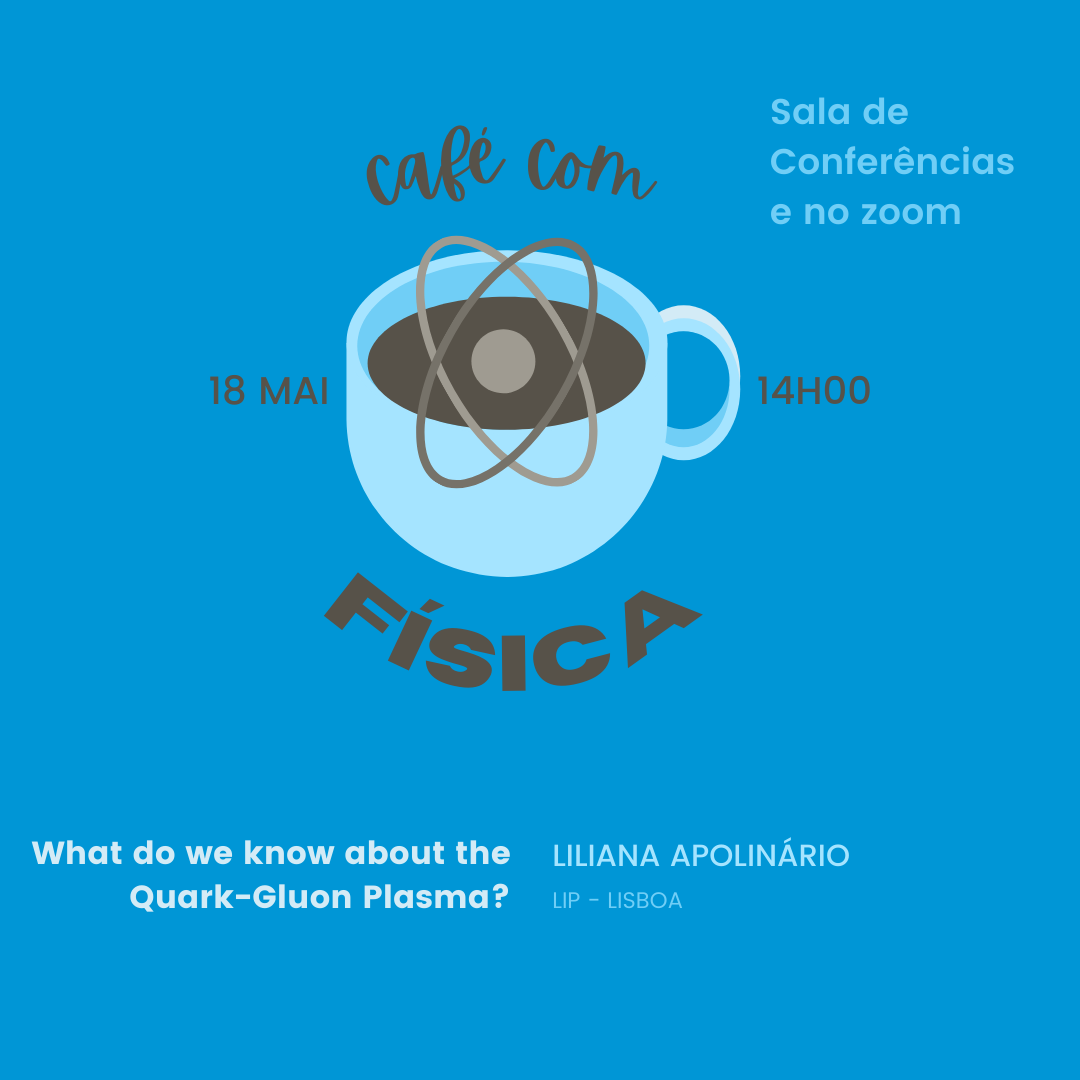What do we know about the Quark-Gluon Plasma?
by
Sala de Conferências
Departamento de Física FCTUC

Heavy-ion collisions are a unique laboratory to study the underlying mechanisms of Quantum Chromodynamics, one of the building blocks of the Standard Model of Particle Physics. By reaching extreme temperature and density conditions, we can produce the building blocks (quarks and gluons, generically named partons) in a state that was prevalent at the primordial stages of our Universe: the Quark-Gluon Plasma (QGP).
The study of the QGP is currently being conducted at ultra-relativistic heavy-ion colliders, such as the Large Hadron Collider, at CERN. While the resulting particles of the collision can provide information about the thermodynamical properties of this medium, only high momentum objects - such as jets - can unveil the QGP constituents at the different wavelengths. After one decade of operation, the resulting picture of the experimental observations has proven to defy our understanding of QGP onset conditions and its intrinsic characteristics. In this seminar, I will provide a comprehensive picture of what was, so far, possible to withdraw given our current theoretical understanding of these high momentum objects.
Paulo Brás e Pedro Costa
